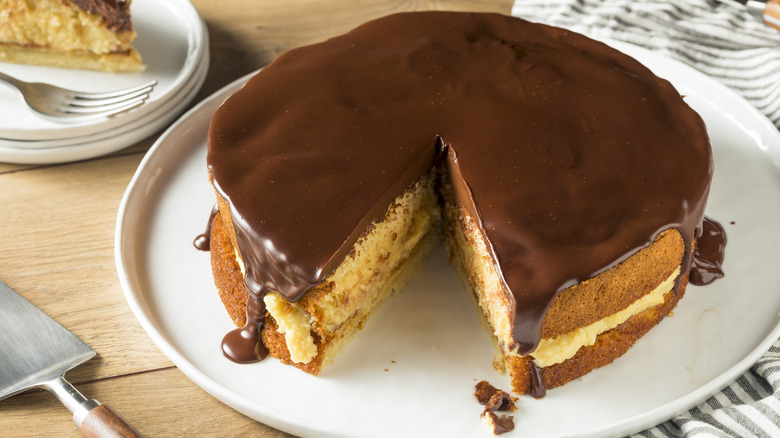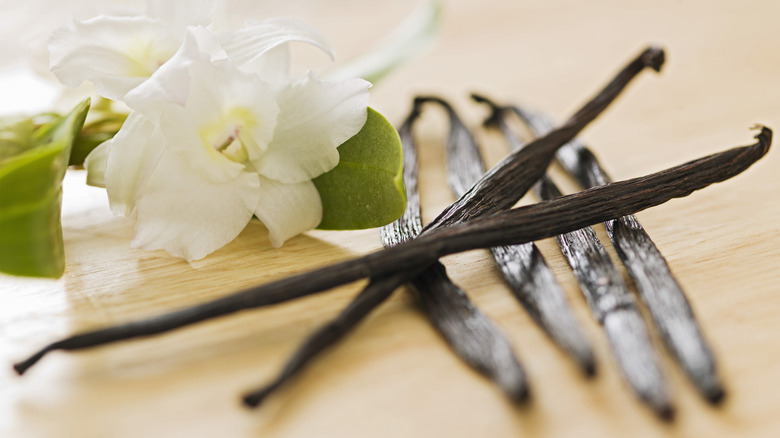How To Get The Most Flavor Out Vanilla Beans When Making Boston Cream Pie
If you've been thinking about making that all-time classic Boston cream pie, there's something you should know. Actually, there are lots of things – for starters, it's not a pie at all. (You'll want to pay attention to how you whip the sugar and eggs because that will determine the aforementioned fluffiness.) Bear in mind that Boston cream pies aren't meant to last and should be enjoyed the day they're made. For that reason, and the fact that this ingredient appears in both the cake batter and the custard, substitute fresh vanilla beans for vanilla extract; the result will deliver the very essence of that perfumed flavor.
If you've never seen (much less scraped out) an honest-to-goodness vanilla bean before, this is a great opportunity. Just like Boston cream pie is not a pie, vanilla beans aren't beans. In fact, they're the skinny seed pods of orchids that grow variously in South and Central America, Madagascar, Uganda, Tunisia, and Tahiti. The thick paste obtained by scraping one of these beans is called vanilla caviar, and it's a wonderful thing indeed: This is vanilla in its purest form, not cut by the alcohol of an extract or the dried vanilla powder that's found in a paste. (See our handy guide on vanilla extract versus paste for more details.)
How to scrape vanilla beans and why you should go to the trouble
While it's true that whole vanilla beans cost more than paste or extracts, if vanilla is a featured flavor profile — as it very much is in a Boston cream pie — it's worth it. Just as with the dessert, vanilla beans don't last long, even when stored correctly (keep sunlight away from that jar!); you don't want them around after three months, because they'll dry out. So, what's the process of extracting vanilla caviar? Simply place the vanilla bean on a cutting board and, using a small, sharp knife, cut it in half lengthwise. Then flip the blade over and use the flat end to scrape out the seed paste.
The good news is that, since vanilla caviar is so concentrated in aroma and flavor, you won't need much of the stuff: The yield from one pod is equal to three teaspoons of extract or paste. This is pretty much exactly what is called for in a typical Boston cream pie recipe; splitting the caviar evenly between cake batter and custard should yield magnificent results. Now the pressure's on to choose the highest quality bittersweet chocolate for the glaze...

